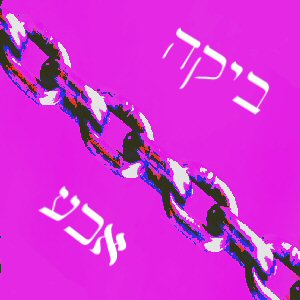They Shall Look Toward Me Whom They Have Pierced
They Shall Look Toward Me Whom They Have Pierced
By
James Scott Trimm
We read in the prophet Zechariah:By
James Scott Trimm
And I will pour upon the house of David,
and upon the inhabitants of Yerushalayim,
the spirit of grace and of supplication.
And they shall look unto Me, whom they pierced through,
and they shall mourn for him, as one mourns for his only son:
and shall be in bitterness for him, as one that is in bitterness
for his firstborn.
(Zech. 12:10 HRV)
In the Talmud Rabbi Dosa (who lived around 250 CE) teaches regarding Zech. 12:10:
What is the cause of the mourning [of Zech. 12:12]--...
It is well according to him who explains that
the cause is the slaying of Messiah the son of Joseph,
since that well agrees with the Scriptural verse:
And they shall look upon me whom they have pierced,
And they shall mourn for him as one mourns for his
only son. (Zech. 12:10)
(b.Sukkot 52a)
In fact the Targum Jonathan to Zechariah also identifies this one being pierced in Zechariah 12:10 as the “Messiah ben Ephraim”.
Lets look at a key phrase from this verse in the Hebrew:
והביטו אלי את אשר דקרו
“And they shall look toward me whom they pierced.”
| have pierced they |
whom | <----- | toward me |
And shall look they |
| דקרו | אשר | את | אלי | והביטו |
Although many attempts have been made to translate this passage in other ways, the Hebrew is obvious. The article את points to the next term אשר דקרו “whom they have pierced” as receiving the action of the verb והביטו “and they shall look” while the preposition אלי must be understood “toward me” as the final י indicates the first person “me”.
Now lets look at how this was translated in the Aramaic Peshitta Tanak:
| whom have pierced they |
at him |
toward
me
|
shall look
they
|
| דדקרו | במן | לותי | דנחורון |
whom
have pierced
they
|
at
him
|
shall look
they
|
| דדקרו | במן | דנחורון |
Now if we look at Zech. 12:10 in context we will see that the speaker here is YHWH:
The saying of YHWH concerning Israel…
I [YHWH] will seek to destroy all of the nations
that come against Jerusalem.
And I will pour upon the house of David
And upon the inhabitants of Jerusalem,
The Spirit of grace and of supplication;
And they shall look toward me whom they pierced
And they shall mourn for him, as one mourns for his only son…
(Zech. 12:1, 9-10)
So we see that:
1. “Me” the speaker is YHWH.
2. YHWH (“Me”) is being looked upon.
3. The one receiving the action of being pierced is the “Me” being looked upon.
4. Therefore the one being pierced here is YHWH.
Many translations have bent over backwards to try to avoid this reading. For example the JPS (1917) text has:
"And they shall look unto Me because they have thrust him through."
And the Hebrew Publishing Company 1916 text has:
"and they shall look unto me for every one whom they have pierced"
As we have said above the Hebrew word ET את is an untranslatable Hebrew preposition which points to the next word or phrase as the direct object which receives the action. While often Hebrew is very ambiguous, here is could not be more specific in saying that the one being pierced is the one being looked upon. These Rabbinic versions are aimed at making the one looked upon be YHWH and the one being pierced as being someone else. Another translation that mistranslates Zech. 12:10 is the Jehovah’s Witnesses “New World Translation” which reads:
and they will certainly look to the One
whom they pierced through
These translators do not have the luxury of making the one "looked upon" and the one "pierced" be different because Yochanan 19:37 makes it clear that they are the same.
Their only “way out” has been to wrongly translate אלי ”toward me” as “to the One”. This translation is intended to avoid the problem presented to Jehovah’s Witnesses (who reject the idea that Messiah was YHWH incarnate) by a text that plainly says that the “Me” (YHWH) is being both looked upon and pierced. Since Yochanan identifies the one pierced as well as the one looked upon as Yeshua, the JW’s must find some way to prevent this from being YHWH. They do so by mistranslating אלי as “to the One”. In reality the אל means “toward” and the י suffix is the first person indicator. This י cannot mean simply “the One” but must mean “Me”. This is clear to any first year Hebrew student.
What is especially interesting is that those who wish to avoid the clear meaning of Zech. 12:10 cannot agree together on what it is supposed to say instead. This is because they are all trying to make it say something other than what the Hebrew text actually does say.

Comments
Post a Comment